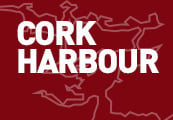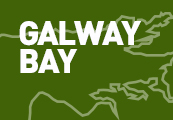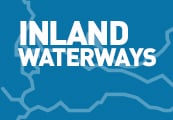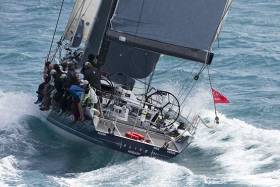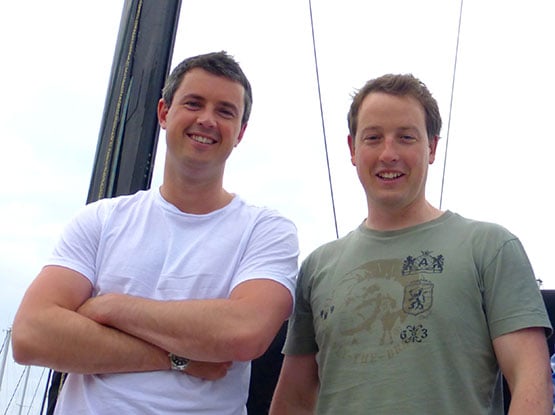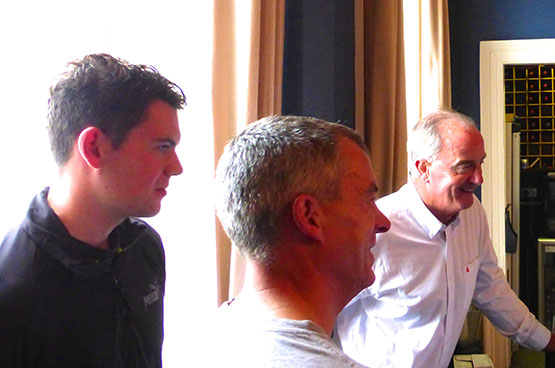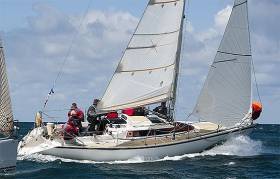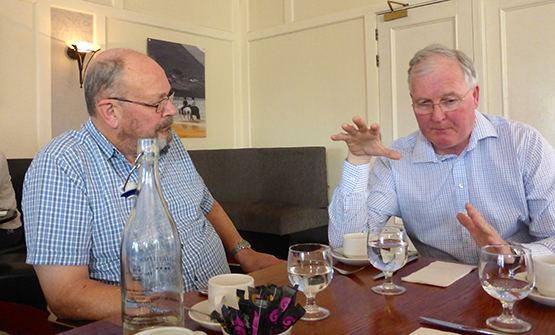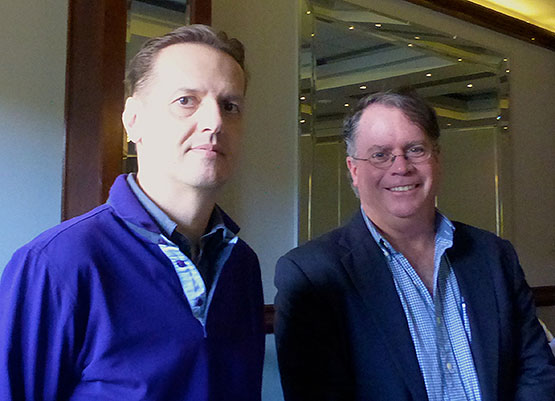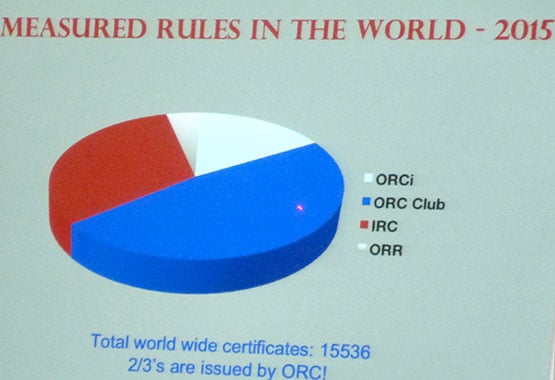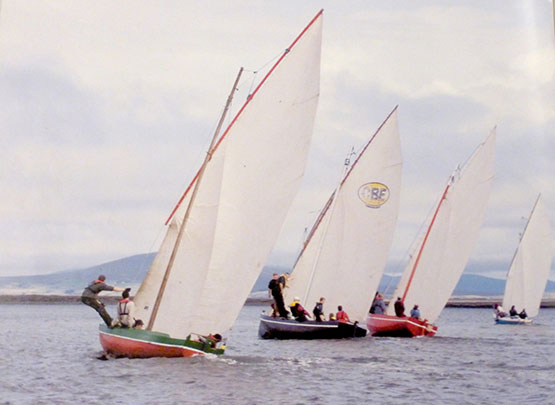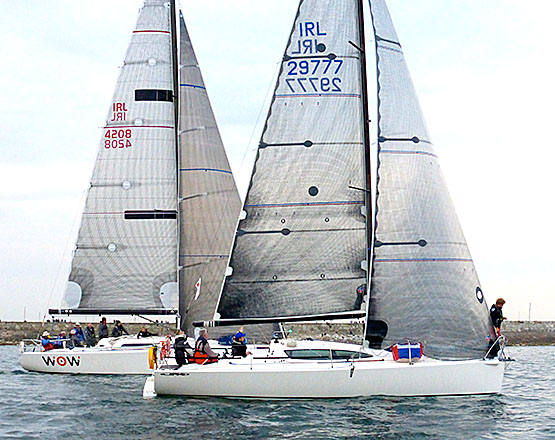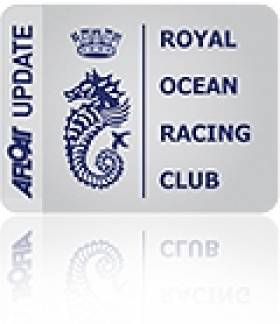Displaying items by tag: ORC
2020 IRC/ORC World Championship in Newport, Rhode Island, USA
The Offshore Racing Congress (ORC) working in cooperation with the Royal Ocean Racing Club (RORC) and Union National Course au Large (UNCL), founding partners of the IRC rating system, are pleased to announce the approval of the New York Yacht Club to host the 2020 IRC/ORC World Championship in Newport, Rhode Island, USA.
This will be the first World Championship for offshore boats held in the United States since the IMS World Championship in 2000, also hosted by the New York Yacht Club.
“We are very pleased to work once again with RORC to plan this important event on the offshore sailing calendar,” said Bruno Finzi, Chairman of ORC. “It has been too long since we have been away from the U.S., where US Sailing was one of our founding members when ORC was formed in 1969.”
The proposed dates are 25 September – 3 October 2020, subject to slight modifications pending review by a Working Party formed by members representing all three partners to start on the detailed planning.
“Our experience in The Hague for the first edition of the IRC/ORC World Championship this year was positive on many levels,” said Steven Anderson, Commodore of RORC, “There is a strong desire to continue this cooperative momentum towards the future. We have agreed that IRC and ORC will work with each other to approve and plan these Worlds events every two years so that our sailors may also plan to put this on their calendars as well.”
“Offshore sailing is part of the DNA of the New York Yacht Club," said Commodore Philip A. Lotz. "Our waterfront clubhouse at Harbour Court combined with Newport's tremendous sailing conditions and extensive marine infrastructure, provide what we feel is one of the greatest venues for offshore racing. The Club is very excited to welcome the world to our hometown for the 2020 IRC/ORC World Championship."
The typical format of the combined Worlds has been 2 to 3 offshore or coastal races, followed by 6 to 7 inshore races. Racing will be in three classes defined by the size and rated speeds of the boats, and all-amateur Corinthian prizes will be offered in each class. ORC and IRC ratings will be used to score the racing, however the Working Party will make the final determination on how when a Notice of Race is issued for the event in 2019.
The Empire Strikes Back: RORC Active on Two Fronts in Two Oceans
Sailing forums have seen exchanges in recent days about the relative global coverage of the Royal Ocean Racing Club’s (RORC) measurement system - the International Rating Certificate (IRC) - and the Offshore Racing Congress’s (ORC) Offshore Rating Certificate.
Dobbs Davis (US), the Chairman of the ORC’s Promotions & Development Committee, and Zoran Grubisa (Croatia), who heads the organisation’s Rating Officer Committee, were in Limerick three weeks ago at the Irish Cruiser Racer Association (ICRA) Annual Conference to make a presentation about their measurement organisation, its methods systems, and its level of world coverage.
This made available yet another fascinating nugget of top-level information for a wide-ranging conference which reflected the considerable influence the ICRA model has in international racing for boats with lids. And at the same time it ensured a good turnout to applaud the ICRA Boat of the Year title going to George Sisk’s WOW from Dun Laoghaire, and to witness the transfer of the role of ICRA Commodore from Nobby Reilly of Howth to Simon McGibney of Foynes. It’s the first time that ICRA has had a Commodore from the western seaboard since its foundation by Fintan Cairns of Dun Laoghaire and the late Jim Donegan of Cork in 2002.
Afloat.ie’s W M Nixon was in Limerick to take the pulse of this unique body, and his commentary in Sailing on Saturday of 12th March ruffled more than a few feathers, and greatly heightened interest in the RORC’s global programme, which has its European section swinging into action this weekend with the Easter Challenge on the Solent.
Who knows, but some time in the future it may be that Rory Staunton of Mayo Sailing Club will be remembered as the man who finally got the IRC and the ORC to get together by crisply pointing out - at the end of Dobbs Davis’s presentation to the ICRA conference - that as far as ordinary sailors were concerned, when IRC and ORC were both used in one event, the results often seemed very comparable. And while it was no harm some times to have two sets of winners (and even more if you include ICRA’s own Progressive ECHO system), at the top international level it only makes sense to Joe Public to have one undisputed winner in each class.
For the world promotion of offshore racing, the optics would surely be much better if everyone was racing to the same rating system? But it will take a while yet to reach this happy situation, for at the moment the ORC and the IRC appear to be in active competition, and regular visitors to the Afloat.ie website will be well aware that some very powerful voices have weighed in on the RORC/IRC side recently, going so far as to question the accuracy of the fleet numbers made in some ORC claims, and pointing to the IRC’s current areas of rapid expansion in southeast Asia and other regions.

Neil Pryde’s characterful Welbourn 52 Hi Fi won the Rolex RORC China Sea Race in 2012 and 2014
But actions speak louder than words, and this week sees the RORC hyper-busy in the Pacific with the biennial Rolex China Sea Race of 595 miles from Hong Kong to Manila in the Philippines, while on the eastern fringes of the Atlantic in the Solent at Cowes, there’s the annual Easter Challenge, an event with an approved integral training emphasis, as top coach Jim Saltonstall and his team will be buzzing through the fleet in their RIBs giving advice to those who have sought it.
With the Easter weekend’s all-too-evident weather deterioration in progress, it’s likely that yesterday will have given the fleet of fifty or so their pleasantest sailing conditions. But with the RORC secretariat decamped for the long weekend from world headquarters in St James’s in London to the club’s waterfront base in the Royal Corinthian YC in Cowes, a sense of being able to go home at the end of a hard day’s racing will ease the harshness of the conditions.
On the other hand, the fact that the RORC now has a bricks-and-mortar Cowes base in what was once the legendary Rosa Lewis’s “seaside cottage” will provide ammunition for those who would claim that the RORC, and the IRC with it, have essentially become a Solent-centric setup. Thus the fact that the Rolex China Sea Race under the RORC imprimatur is taking place at the same time is very helpful indeed for those who would promote IRC as the world’s measurement system.
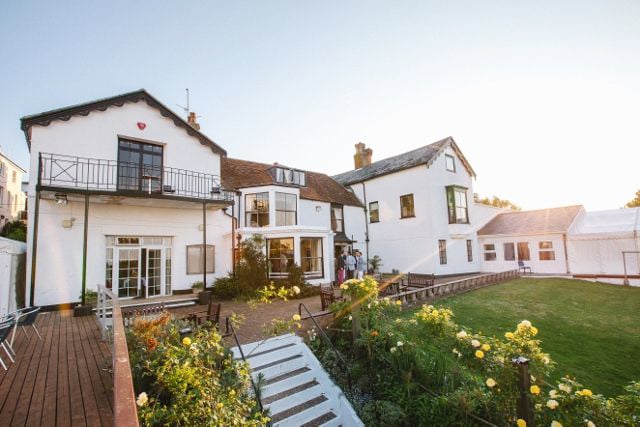
The nice little place by the seaside…..The Royal Corinthian YC in Cowes – a byword for hospitality – is now the RORC’s Solent base
In times past, leading Irish skippers with a Hong Kong base such as Paul Winkelmann and Jamie McWilliam have featured in the China Sea Race, for it has a history as a biennial event going back to 1962, when three yachts – one each from Hong Kong, the Philippines and Japan – raced this decidedly disputed bit of water. The situation was such that a naval vessel from Hong Kong accompanied them for the first two hundred miles, and then a hundred miles out from Manila, they were met by a ship from the Philipinnes navy.
The line honours and handicap winner was Chris von Sydow’s yawl Reverie, one of those classic American-style yawls of the Finisterre type which were being widely built in the region at the time, mostly for export. They were guaranteed as teak through and through, for as one sardonic observer put it, the wonderwood was so abundant out there in those days that if the team in the boatyard felt like a brew-up of tea, they’d boil their kettle on a little fire made with teak kindling.
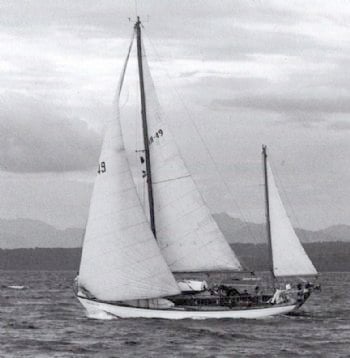
The winner of the first China Sea Race in 1962 was Chris von Sydow’s yawl Reverie
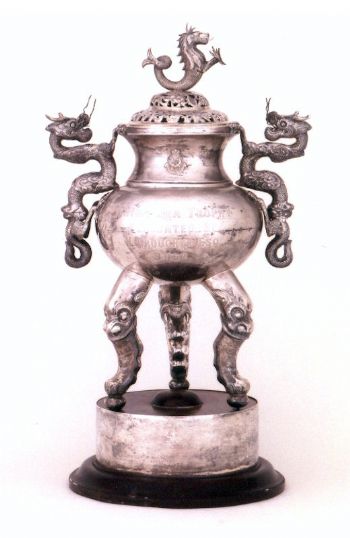
A trophy to match. Only a race right across the China Sea would merit a prize like this
Reverie’s time was four days 11 hours and 29 minutes, and she got the very distinctive China Sea Trophy, which is of such a style it just couldn’t be the prize for any other major offshore race. Gradually the numbers built up as it became an established biennial event, in 1972 the RORC came aboard as partners, and it hasn’t looked back since. There’s been some spectacular sailings, the record being set in 2000 by Karl Kwok’s Open 60 Beau Geste, which cracked the two day barrier by coming in on 47 hours and 43 minutes, just 17 minutes maybe, but it was 17 minutes the right way.
The races of 2012 and 2014 were won by Neil Pryde’s rather special Hugh Welbourn-designed 52 footer Hi Fi, but she’s not in this year’s fleet which got under way on Wednesday and has the front runners well in already, though only after a start in miserable conditions which improved in terms of sailing power to have a 28-knot nor’easter building in a monsoon. This made the going good the further you were down the course, but yesterday the little fellows at the tail end were taking a bit of a pasting.
Line honours were taken yesterday (Friday) evening by Australian Philip Turner’s Reichel Pugh 66 Alive, which covered 244 nm in the final 24 hours to set a new course record, though just 11 minutes inside Beau Geste’s remarkable 2000 time – who’d have thought it would stand for sixteen years? Overall on handicap, Alive currently also has it every which way, but things are also looking good for the Ker 42 Black Baza (Anthony Root).
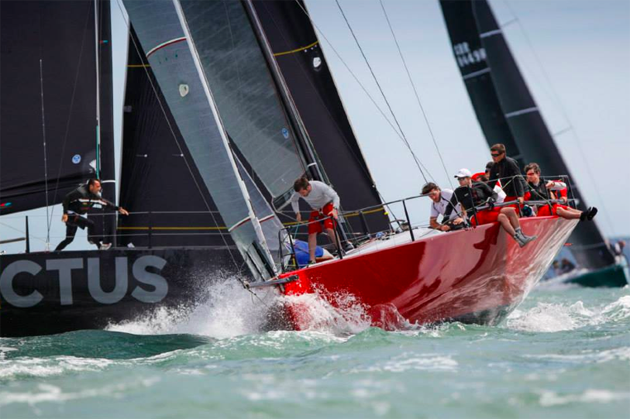
Cutting it close. Anthony O’Leary’s Antix in a neat-enough port-and-starboard situation with the even newer Ker 40 Invictus
Conditions in Manila may not be idyllic, but at least they’re a bit warmer than the Solent this morning with a succession of fronts set to sweep through for much of he remainder of the Easter Holiday. Irish interest is high as Anthony O’Leary’s Munster-red Ker 40 Antix is defending champion, and the skipper was in fine form in Thursday as he outlined prospects and talked us through some of the usual suspects who will be sailing on this very attractive boat.
Following his accident while racing Antix in ferocious conditions last July, it’s great news that Dylan Gannon of Howth is back on the strength, along with his shipmate Ross MacDonald who had a truly prodigious season in 2015, playing a leading role in crewing Antix while at the same time campaigning his family’s veteran X332 Equinox to such good effect that he was top boat at the ICRA Nats in Kinsale.
Back on the strength. Dylan Gannon (left) and Ross MacDonald are both sailing on Antix his weekend. Photo: W M Nixon
Two new additions to the Antix strength are Will Byrne from Howth, who was recently making the scene with Half Ton Classics World Champion Dave Cullen and the gang in the C & C 30 championship in Florida in January, and young Cian Guilfoyle from the National Yacht Club in Dun Laoghaire, who leapt to fame as the third man aboard the J/80 when Anthony O’Leary retained the Helmsman’s Championship of Ireland by a considerable margin at the NYC in October, with longtime shipmate Dan O’Grady the man in the middle.

Cian Guilfoyle maximising his righting moment while crewing for Anthony O’Leary in the victory in the Helmsmans Championship, October 2015. Photo: David O’Brien
Winning team. Cian Guilfoyle, Dan O’Grady and Anthony O’Leary in the NYC after winning the Helmsmans Championshjp 2015. This weekend, Guilfoyle has joined the crew of Antix. Photo: W M Nixon
The other top Irish contender in the RORC Easter Challenge is also from Cork, Conor Phelan’s Ker 36 (or is she a 37) Jump Juice of 2008 vintage. This makes her something of a veteran but she’s by no means the oldest boat competing, as one doughty skipper has turned up with a Mumm 36, which is like a bit of living history. Yet she’s in with as much of a shout as anyone else if the IRC is doing its work properly, which seems to be where we came in…….
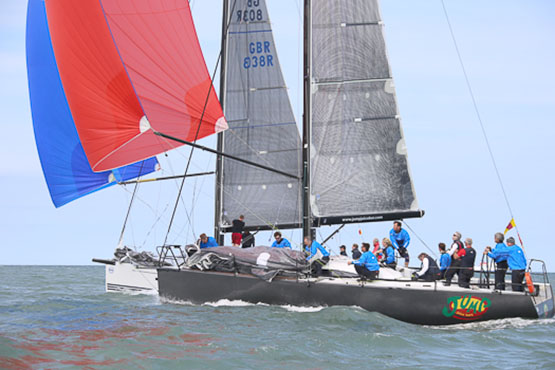
Back in the day…….the new Ker 36 Jump Juice makes her debut in 2008
But we cannot depart without musing on the makeup of this year’s Brewin Dolphin Commodore’s Cup team which will be defending for Ireland. As other people get agitated about the lack of heads above the parapet to indicate the beginnings of a buildup, Anthony O’Leary is reassuringly philosophical about the whole business.
He is of course very much up for it with Antix, and he’s well aware that there’s another good possibility with RORC Commodore Michael Boyd (Royal Irish YC) in line to be campaigning the works JPK 1080 as the season gets going, and of course the JPK 1080 is the boat du jour. As for a third boat, if Jump Juice is reluctant to make the commitment, they’ll be on the lookout for a boat rating 1.049 or above.
But it’s early days yet. As O’Leary recalls with quiet amusement, in assembling the 2014 team from scratch and the non-defence of 2012, he refused to let himself think that the new Ker 40 Catapult was a certainty until he actually saw her unloaded from a ship from America onto a quayside in Europe.
Yet she arrived on time. But it was the Steady Eddy of the team, the Grand Soleile 43 Quokka 8, which ended up causing the most concern. Her charter had been firmly in place since November 2013, but then there came a complete foul-up with delivery schedules back from campaigning in the Caribbean. It was more than a rush to have Quokka race ready for the preliminary jousting in Volvo Cork Week in July 2014. But not to worry. She ended up as champion in Cork Week, and made a solid contribution to the Commodore’s Cup win in which Catapult (which has since become Antix) was top-scoring individual boat.
RORC Defends IRC Handicap Following Irish ORC Presentation
The Royal Ocean Racing Club (RORC) in London says a 'correction is needed' over information contained in an article following an ORC presentation at the ICRA Conference in Limerick, a week ago. Michael Boyd, the Commodore of RORC, says the offshore body 'read with interest', and 'some confusion', the press release by the ORC. Boyd says he feels 'very strongly' that information put forward by Dobbs Davis, Chairman of ORC’s Promotion and Development Committee, 'needs correcting'.
In a statement issued by RORC, who administer the rival IRC system, the club says:
First, the numbers presented are wrong. Dobbs quotes the number of ORC certificates in total up until the end of the year, but only quotes the number of boats in IRC until the end of August of 2015. These are very different figures. Dobbs quotes 4958 for IRC in 2015 but the real number of certificates for the whole year is 7721. That makes the graph look very different and makes IRC the largest individual system in 2015 with ORC Club behind it at 7404 and ORCi trailing at 2492.
It should also be noted that both IRC and ORC are International Rating Systems recognised by World Sailing and IRC is currently in discussions with World Sailing about having its own World Championship. Rather than having two world championships for offshore boats, we are supporting the WS initiative to have one jointly scored IRC/ORC world championship which will allow the event to travel to other continents.
IRC is expanding with new territories in India and Taiwan, growth in Japan and China and very encouraging numbers for the start of the year from many Northern European countries.
IRC is also flexible and not limited to using time-on-time scoring - as has also been suggested. A simple time-on-distance calculation can be applied to create a time-on-distance value, should race organisers want to use it. Similarly, crew number or crew weight can be applied depending on the race organiser’s needs and wishes.
IRC is doing a great job for our sport – you only have to look at the style of boats that have developed since the demise of IMS (the basis of ORC) to understand that IRC is a progressive rule – with the latest generation of boats being fast, safe and fun to sail. Our goal is to ensure that we provide a first class service and develop a product that is constantly evolving to make sure that racing under IRC is as fair as is possible.
- Michael Boyd, Commodore, ROYAL OCEAN RACING CLUB
ORC Interest From Ireland at the ICRA Conference
At the annual meeting of the Irish Cruiser Racing Association (ICRA) in Limerick last weekend, past president Norbert Reilly invited representatives from the Offshore Racing Congress (ORC) to address the assembled crowd of over 60 delegates on features of ORC’s rating systems. Here the ORC's Dobbs Davis gives an overview of the Irish presentation.
The interest from ICRA is in response to the recent growth and popularity the ORC system has seen in recent years around the world: the system issued over 10,000 certificates in 2015 in some 40 countries, has been growing yearly while other international systems are struggling, and yet its not in use at all in Ireland.
What the delegates saw was a presentation on the history of the organisation, which goes back over 40 years into the IOR era, over a decade in IMS, and is now emerged as an improved and accessible science-based system suited for a wide variety of boat types that generates three distinct styles of rating certificates: ORC Club, ORC International, and ORC Superyacht. Of the 15,000 measurement-based certificates issued around the world, two-thirds are issued by ORC in one of these three formats.

A plot of the growth of ORC contrasted to IRC in the last 10 years
There are five salient features of the system: that it is objective and science-based, it is open and transparent to use, it is accessible online, it is flexible with a variety of scoring styles suited for different types of racing, and that its affordable.
The objectivity comes from use of a sophisticated Velocity Prediction Program (VPP) which through input of measurements of a boat’s hull and appendage profiles, its rig and sail dimensions and other inputs, can calculate the boat’s theoretical speed in a variety of conditions of wind speed and wind angles. To remain relevant to modern designs and improve the methods used in the VPP calculations, it is developed continuously by experts on the International Technical Committee (ITC), which includes talent such as Andy Claughton from the Wolfson Unit at Univ. of Southampton (and now the BAR AC programme), designers Jason Ker, Shaun Carkeek, and others from Farr Yacht Design, Judel/Vrolijk and others.
In fact, the ITC is meeting soon in Annapolis USA to discuss improvements in a variety of areas in response to inquiries from users. This is an important feedback loop that ORC has to continually seek to improve the accuracy of its system. The ORC VPP and its rules are not secret, and are available for download at the ORC website (www.orc.org).
Because the system is open and transparent, ORC has worked hard to make it as accessible as possible to its users. All valid ORC Club and ORCi certificates issued since 2009 are available from ORC’s unique portal to its rating system, the ORC Sailor Services. After registering for a free log-in credential, anyone can access these certificates for free, as well as some 88,000 measurement records that date back 20 years into the IMS era. The searchable database can be used to research the measurements and ratings for any boat in the system, run a test certificate on the current ORC VPP, run a Speed Guide report of the polar performance of the boat or a Target Speed report of the boat’s polar speed targets on a windward-leeward course.
The system also has an edit function that allows a boat’s measurements sails, spars, or crew weight to be changed so that test certificates can be run to explore the effects of these changes on rating. Test certificates are not valid for racing, but can give the user insight on how to optimise their boat for performance…most systems discourage this with limits and high costs placed on test certificates, but ORC’s open approach allows this to better educate its users on their set-up options.
Because the “rating” for a boat is in fact a matrix of speed values generated by the VPP, ORC’s scoring options are varied for use by race organisers: they can be very simple, where all wind angle and wind speed predictions are condensed into a single number, or quite complex, where inputs of wind angle and course length are used to model the boat’s speed around the course, and their corrected time is calculated based on their relative performance to their competitors on this course.
There is also a hybrid approach, called Triple Number, where for either an inshore or offshore course the ratings are expressed as a function of Light, Medium or Heavy wind speeds. This is a very common scoring style used in ORC Club fleets.
Because ORC uses numerous measurements of a boat’s hull, rig and sails, and there are a variety of scoring options available for race managers, there is less tendency for type-forming rating bias in specific designs such as seen in other single-number systems. This allows the system to be more fair across a wide spectrum of boat types and styles, and the test fleet used to evaluate the system is comprised of some 1500 different designs. It’s thus less relevant to label a boat as being “an ORC design” like is typically seen in other systems.
Proof of this can be seen in the results of the highest-level ORC Championships, the Worlds and the Europeans: recent podium finishers have been not only top-level pro teams sailing on full-race boat types, like TP 52’s, GP 42’s, etc, but well-prepared teams racing production dual-purpose designs as well, such as Swan 42’s, Swan 45’s, X-41’s, X-37’s, etc. The racing at ORC championships is popular – over 100 entries from over 20 countries in the last 5 years at the Worlds – and its close: races are often won and lost by mere seconds in corrected time.
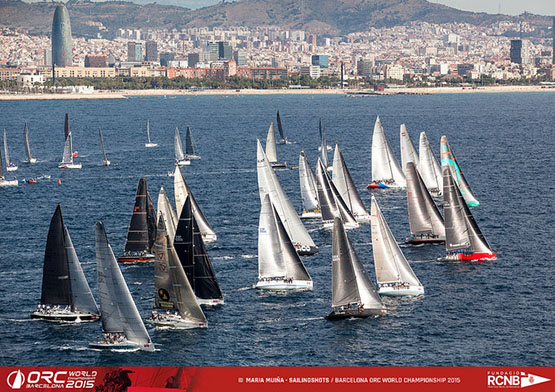
The ORC 2015 World Championships off Barcelona
This year’s ORC World Championship will be in Copenhagen at the Royal Danish YC over July 15-23, and the ORC European Championship will be over July 3-10 in Porto Carras, Greece. There are already 130 entries are signed up for the Worlds, which promises to be another great week of inshore and offshore racing.
The ease and affordability of ORC certificates is determined by the policies and prices set by national rating offices, who are not centrally controlled but have all the tools needed to generate their own ORC certificates for their local customers.
Response to the talk on ORC was generally well-received by the ICRA audience, with particular interest from the fleet in Dublin Bay to try some ORC Club certificates and look at some dual-scoring exercises in the coming season. The attraction expressed to use of ORC is being able to have multiple scoring options to differentiate more fairly across varied boat types in the same race, and the general openness and objectivity of the system.
Dobbs Davis is ORC Media Consultant
Read also: Crazy But It Works: ICRA's Success Is a Highlight of Irish Sailing Scene
The Irish Cruiser-Racer Association (ICRA) is a unique organisation. “Run by sailors for sailors”, it is nevertheless a very land-centric administrative body whose only manifestation afloat as a group with its own identity is seen at the organisation of the annual ICRA Nationals. And the sense of it relating purely to the island of Ireland is accentuated by the fact that much of its work is essentially back-office activity, dealing with handicaps and all the other paraphernalia involved in providing the nation’s numerous and very diverse cruiser-racer fleet with meaningful racing. W M Nixon went to last Saturday’s ICRA Conference to get a flavour of what ICRA does, and came away both impressed and stimulated.
Sweeping along southwestward towards Limerick on our wonderful motorway system, while one’s body stays firmly on the dual carriageway, the mind can wander into any pathways it wishes. So we got to thinking that, in this age of increasing numbers of administrators trained to third level degrees in the running of not-for-profit organisations, it’s a bit odd to find a very successfully central organisation which is apparently run – and well run at that - on a Corinthian basis “by sailors for sailors”.
Surely in today’s climate, which favours key bodies such as this being run by highly-trained specialists on at least a semi-professional basis, a seemingly amorphous organisation which is “run by sailors for sailors” is verging on a clear case of the asylum being taken over by the lunatics?
We’d soon see. Meanwhile, why on earth hold an annual conference in Limerick? With Ireland’s population distribution changing so rapidly, skewing both towards the large urban centres and particularly towards the east coast and Dublin, surely anyone organising a national conference would find it attendee-friendly to look at the latest map of population weighting. As it happens, I’m not sure that such a map exists, but we’d like to think that with today’s computers it is possible to construct a map where, after due calculation, you could pinpoint to the exact centre of Ireland’s total population distribution.
So you set out heading for Limerick at an unfeasibly early hour thinking that maybe a central location such as pretty Portlaoise or tidy Trim would probably be Ireland’s central point in relation to population distribution. But after some smooth time on the road with the sense of the wonderful west coast coming ever nearer, you begin to wonder why ICRA didn’t make a proper job of it, and take us to Dingle where we can breathe that wonderful Atlantic air and think great thoughts of sailing the high seas.

Far from the pressures of the cities of the east and south coasts, Dis-a-Ray is moored in the peaceful surroundings of Tarbert, where the south shore of the Shannon Estuary has already become part of the Kingdom of Kerry. Photo: W M Nixon
As it is, though the Dubs may think of Limerick as being on the western seaboard, it’s actually remarkably central when you draw lines across Ireland between all the best sailing locations. And as we knew that the position of Commodore of ICRA was going to pass on Saturday from Nobby Reilly of Howth (the Dingle of the East Coast) to Simon McGibney, Limerick was just about spot on in terms of equal travel time. For although the new Commodore has Foynes YC on the Shannon Estuary as his home club, his Dehler 101 Dis-a-ray is actually moored at his home at Tarbert which is further west down the Estuary, so much so that Tarbert is in the Kingdom of Kerry.
We arrived in to find a virtually full house distributed around a room-circling table such as they use for international diplomatic conferences to make peace with rogue states, with the layout being planned so that everyone can be an equal participant. It was grand for those of us who had arrived in the nick of time to get a seat, as we’d the fully-equipped table in front of us (did anybody else find it the devil’s own job to open the rather good but tightly-wrapped little sucky sweets which are essential to a talking shop?), but being Ireland several people arrived late, the show was already on the road, and they’d to find a seat as best they could.
All of which meant that there was a bigger turnout than expected, which is good news for ICRA. And for those of us comfortably ensconced, it made for a fascinating throughput of information by a long list of speakers, even though the layout meant that networking was restricted to the one hour lunch break if - like many people - you were relying on the 3.30-3.45pm wrap-up to facilitate returning to Dublin or Cork or wherever for a completely different event that night.
From the beginning, the dominant theme was on how we get more people into sailing, and everyone blithely talked as though we’re offering Joe Public a warm and sunny Croatian sailing product right here in Ireland, cheerfully ignoring the fact the last two summers have been plain lousy in terms of good weather.
Certainly the sailing was great for the enthusiast, but can you imagine a newcomer to the rough and ready sailing world wondering where on earth the attraction of it all was to be found as they were blown and bashed around at what we thought of as the utterly wonderful ICRA Nationals at Kinsale in June, or took in the all-too-typical variety of Irish summer weather at the hugely successful Volvo Dun Laoghaire Regatta in Dublin Bay in July?
Yet there is a fresh demand out there, and two of the morning’s speakers, Alistair Rumball of the Irish National Sailing School in Dun Laoghaire and Des McWilliam of McWilliam Sailmakers in Crosshaven, gave excellent talks on encouraging it, with Alistair showing us how his programme of moving beginners through dinghies and on into the school/club’s1720s, then became an inevitable progression into gaining experience and instruction on the school’s Prima 38 Lynx.
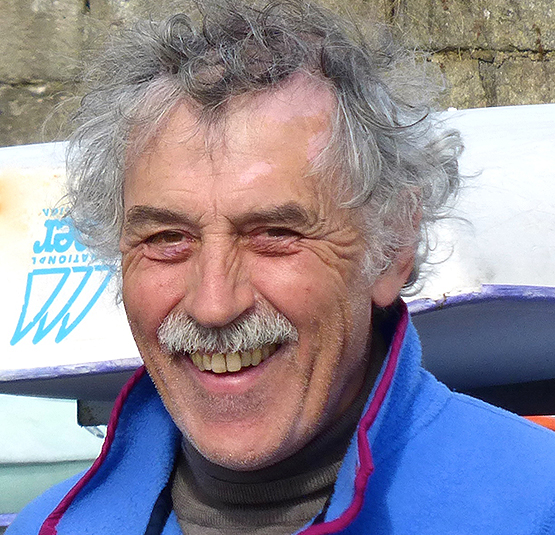 The mover and shaker. Alistair Rumball’s Irish National Sailing School in Dun Laoghaire is first port of call for many newcomers to sailing. Photo: W M Nixon
The mover and shaker. Alistair Rumball’s Irish National Sailing School in Dun Laoghaire is first port of call for many newcomers to sailing. Photo: W M Nixon
“Lynx has been a greater success than we could have ever dreamed of” he said. “She has been so booked out with people keen to learn about sailing a cruiser-racer that we haven’t been able to get as much actual racing with ISORA and so forth as we’d like. But for 2016, she’s being taken out of our Dun Laoghaire setup for long enough to be organised for a proper shot at the Volvo Round Ireland”.
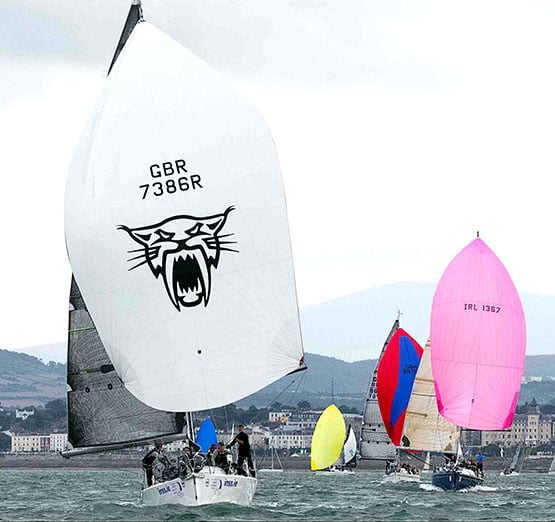
The double life of a Prima 38. The INSS’s Lynx in full racing mode in Dublin Bay (above), while below she is seen in early training mode as she takes a crew of beginners in cruiser-racing out for some formative experiences

As of last weekend in Limerick, there were just two crew places left aboard Lynx for this year’s Volvo Round Ireland on June 18th, and they’ve probably been snapped up by now. But the Rumball presentation underlined the fact that there are people out there who are mad keen to get into cruiser-racing, and it was up to ICRA to guide its members as to how best to tap into these wannabee sailors, instead of bleating all the time about how hard it is to find crew.
Des McWilliam leapt into the same theme, and gave us a crash course in how to make crewing on your boat more attractive to strangers. Admittedly the experience of seven years of acute economic recession have understandably made those who have kept boats in racing commission more than a little stressed. But if they want to reap the benefits of having struggled to stay in the boat-owning stream, then they have to make their cruiser-racers pleasanter to sail on, and more effective racing machines.
The McWilliam message was blunt in the extreme. “As a sailmaker in Ireland, each year I will race actively at many venues on upwards of 40 boats, both evenings and weekends. I will experience many different management and sailing styles. At the end of the year looking back, I usually realise that there might be only ten to a dozen boats out of that total of forty to which I would gladly and freely return for the good sport, the efficient sailing, the successful racing, the camaraderie – the fun. The rest of them are just work, involving duty visits. Please remember this when you are setting up the running of your boat, and trying to encourage people to sail with you.”
Des McWilliam of Crosshaven and Rory Staunton of Mayo. Des provided the meeting with some telling home truths about how attractive (or not) cruiser-racers throughout Ireland can be to sail on, while Rory Staunton led the charge in wondering why ORC and IRC cannot be amalgamated, and then went on to outline a new trailerable 33-footer he and an international group of friends are developing to make the incomparable west of Ireland a more accessible sailing area
We earned our lunch by going through an intensive session with Dobbs Davis of the Offshore Racing Congress, who had come to the conference with Zoran Grubisa to promote their measurement rule, which is used worldwide anywhere that IRC is not dominant, and in some key events such as the Rolex Sydney-Hobart Race, they are used in tandem, though IRC is currently the more-used system in that classic event.
It says everything about how Irish sailing punches way above its weight that these two guys thought it worth their while to come among us and evangelise for their system in a country which has a more-than-friendly relationship with the IRC and the people who run it. But it was fascinating stuff, making an input which added real spice to the day.
Davis is Chairman of the ORC’s Promotion & Development Committee, while Grubisa heads the Rating Officers Committee, and they run a system which is now the ISAF-approved rating method for the ISAF Offshore Worlds, which this year will be staged in Copenhagen in July, which as it happens is more or less the same time as the Royal Cork YC will be staging the new European IRC Championship in Volvo Cork Week at Crosshaven.
So the presence of the evangelists from the ORC at the ICRA conference could have opened up a right can of worms, but fair play to Dobbs Davis, he gave such an enthusiastic and lucid explanation of the completely transparent way in which ORC function that, for the time being at least, one’s instinctive loyalty to IRC was suspended out of intellectual curiosity.
Leading Offshore Racing Congress officers Zoran Grubisa (left) and Dobbs Davis were in Limerick to evangelise for the ORC Rating system
While IRC still has one or two hidden elements – the “Black Box” factor – with the transparency of ORC, you can always see how different inputs are effecting the final figure. One-design sailors may find all this utterly yawn-making, but as Davis pointed out, although there are so many successful cruiser-racer One-Design classes in America that ORC has yet to gain significant traction there despite being first set up in the US forty years ago, elsewhere in the world more and more people are coming to ORC as they enjoy watching boat innovation and performance analysis interacting to make their sailing more interesting and the results indicative of pure sailing ability.
The approachability of the ORC system was presented as one of its advantages
The slice of the cake worldwide for the different rating systems
But as we all know, where IRC and OCR are run side-by-side, despite the IRC’s hidden elements the two outcomes are often very similar. And in Ireland where we have a soft spot for the old S&3 34s which set world alight in 1969-73, the fact that the veteran though beautifully restored S&S 34 Quikpoint Azzura was overall winner of the Rolex-Sydney Hobart Race under OCR, after so nearly doing it on IRC, caused a bit of heart-searching. But nevertheless Rory Staunton from Mayo SC spoke for many when he demanded to know why IRC and ORC couldn’t get together and resolve their small differences for the general benefit of the offshore racing fraternity. Dobbs Davis said his door was always open, but that began to feel a bit too reminiscent of the current efforts to form a government, so we were glad enough to take a break for lunch and then return to the rating topic, but from an entirely different point of view
The inevitable expense in maximizing your boat’s performance potential under either IRC or ORC made the sheer economy of ICRA’s Progressive ECHO system seem immediately attractive, and the lead-in the afternoon session by SCORA Commodore Ronan Enright even more apposite. Because the fact is, you could run the Progressive ECHO Handicap System without even knowing what a boat looks like, let alone having her dimensions measured do the last millimtre.
Donal O’Sullivan of Dublin Bay SC, and Ronan Enright, Commodore SCORA, discussing sailing administration matters during the lunch break at Limerick. Enright went on to give an illuminating presentation about developments in Progressive ECHO Photo: W M Nixon
In the absence of ICRA’s ECHO supremo Denis Kiely - unavoidably absent for family reasons – Ronan Enright gave a quietly telling performance. It’s fascinating that though ECHO started life as the East Coast Handicap Organisation back around 1971-72, it’s now a nationwide service overseen by ICRA, and its most active area of development is in the cauldron of concentrated cruiser-racing which you find when the activities of Cork Habour and Kinsale are combined.
Basically, Progressive ECHO depends on the results of the most recent race, after which, if certain criteria have been fulfilled, the results are automatically re-computed to give boats a new rating based the supposition that they had all finished dead level on handicapped time. My own most recent experience of racing with it when it is being enthusiastically applied was in the Volvo Dun Laoghaire Regatta, which was a perfect test-bed for the system, as it was a compact series with the same fleet throughout.
The result is a series-long level of commitment by boats and crews who, under a more brutal system, would have seen their interest and enthusiasm flag after Day Two or even earlier. So really the message is: If we’re trying to get people to enjoy sailing and particularly to enjoy racing which is what the non-involved most easily comprehend, then Progressive ECHO is doing more to get bums on boats than anything else in Irish sailing, for believe me you have never seen anything quite so heart-warming as the response of a crew who, under One-Design or fixed handicap systems, had not been at the races at all, yet suddenly under Progressive ECHO they find they’ve recorded a win.
Which was all good news but perhaps the most interesting revelation of all from Ronan Enright was that the top IRC racers around Cork are now taking a closer interest in their Progressive ECHO showing than there are in their IRC results. For under IRC, they know they’ll be in the top six, but each post-race adjustment of Progressive ECHO gives them a very clear message about just how well or not they were really doing on the day.
Tom MacSweeney of this parish then hosted a forum which basically came down to how sailing can present a more friendly and accessible response to people who might be vaguely interested, and could be potential sailing enthusiasts. This involved him drawing on his training as a critical journalist, for as he admitted, when he first turned up with his first sailing boat – a Ruffian 23 – in Crosshaven, everyone from Denis Doyle downwards immediately made him welcome. But we can all think of non-assertive characters who are great sailors, yet if they hadn’t been in sailing families in the first place, they might not have taken up the sport at all owing to the sometime apparently closed nature of “yachting”.
We learned that very little of an Achill yawl is showing above the water after she capsizes. This is how they look in proper order
Allied to Des McWilliam’s incisive look at boats which you like to be aboard, and boats which you definitely don’t, and it all provided food for thought, as too did John Leech of Irish Water Safety with his no-nonsense presentation about a mature approach both to safety, and to being rescued. In an interesting mix of images, he showed us a photo of what happens to an Achill yawl when it capsizes. The result is an awful lot of rather waterlogged traditional boat under the surface, and only a little bit showing with the crew perched on top. As Des McWilliam was probably the only other person present with any idea of what an Schill yawl in full health looks like, the least we can do here is show you a photo of them in good sailing order. Meanwhile, John Leech concluded by saying that when you call out the ASR helicopters, think rather of how you can prevent your mast – if it’s still standing – from interfering with the rescue. Don’t for heaven’s sake use up emotional energy thinking about how much it all costs. They’re on standby all the time, and you the taxpayer have paid for them in the first place.
We concluded with Rory Staunton seeking interest and opinions for the new 33ft trailerable One-Design. While we all hope to get down to Clew Bay to sail the prototype this summer, could I suggest that one of the most exciting projects on the Irish cruiser-racer horizon is WIORA Week 2017 in the Aran Islands. So when they’ve finally got around to fixing a date, maybe the promoters of the new 33-footers could arrange to have a flotilla of them in Kilronan in 2017 to give the class a rocket-assisted launching.
Meanwhile this year’s WIORA West Coast Championship is under the auspices of the Royal Western of Ireland Yacht Club at Kilrush from June 29th to July 2nd. There’s so much extraordinary history in being able to write that simple bit of information that I reckon we’ll have to give it a complete blog in the future.
As for the ICRA Nationals, they’re at Howth from June 10th to 12th with both IRC and Progressive ECHO being used, while Volvo Cork Week comes up in July after the Volvo Round Ireland race has been tidied away in late June.
Although last Saturday’s Limerick gathering was essentially a wide-ranging conference, it was also the changeover to the new Commodore, with Simon McGibney taking on the mantle from the energetic and enthusiastic Nobby Reilly whose own boat, the Mills 36 Crazy Horse, was seen in virtually every event, and looked like heading for the win in Class at the ICRA Nats in Kinsale last June until new big winds swept George Sisk’s WOW to the fore. During Nobby’s busy time in the top office, ICRA’s activities and its reach steadily expand, while thanks to the persuasive efforts of Anthony O’Leary, a Commodore’s Cup team was assembled which regained the trophy in 2014.
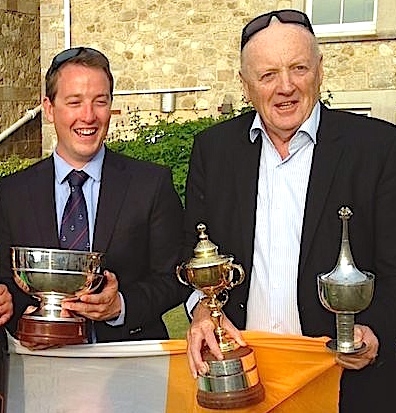 Ross MacDonald and ICRA Commodore Nobby Reilly at the Royal Yacht Squadron in Cowes in July 2014 after Ireland had won the Commodore’s Cup. At the ICRA Conference in Limerick last weekend, McDonald won a special award for his season’s results in 2015 with his X332 Equinox, while Nobby Reilly stood down after his successful years as Commodore, handing over the helm to Simon McGibney.
Ross MacDonald and ICRA Commodore Nobby Reilly at the Royal Yacht Squadron in Cowes in July 2014 after Ireland had won the Commodore’s Cup. At the ICRA Conference in Limerick last weekend, McDonald won a special award for his season’s results in 2015 with his X332 Equinox, while Nobby Reilly stood down after his successful years as Commodore, handing over the helm to Simon McGibney.
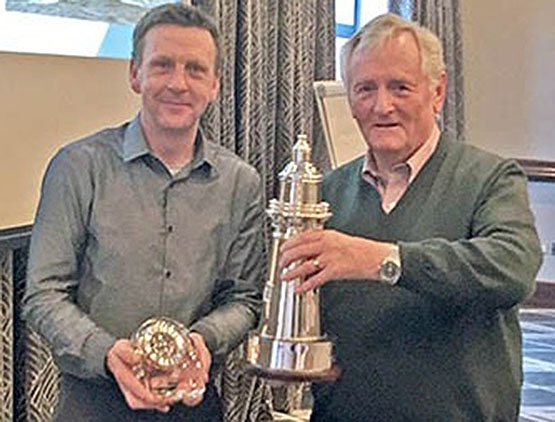
New ICRA Commodore Simom McGibney presents the “Boat of the Year” trophy to George Sisk of the Royal Irish Yacht Club, skipper of the Farr 42 WOW.
Work is going on behind the scenes to provide a strong defence this summer, but Anthony O’Leary wasn’t in Limerick to tell us about it, as he was away on his annual participation in America in the Viper 640 Championship, which just wouldn’t be the same if O’Leary wasn’t taking part - so much so that last year, he wasn’t present when his name came up as “Sailor of the Year” in Dublin, for he was away then too, Viper racing in the sun.
But other top sailors were there to round out the conference with the annual awards such as special performances by the likes of Dave Cullen with Checkmate XV and Ross Macdonald with Equinox and, while the ICRA Boat of the Year presentation, with warm acclamation, went to George Sisk of WOW, who not only admitted that his well-tested craft usually races with a crew of average age 53, but if he himself didn’t happen to be on board, the average age came down considerably………..And in case you think becoming ICRA Boat of the Year is all about glamour racing in sunshine, we close with a photo of WOW and the JPK 950 Alchimiste crawling towards the starting line for the Dun Laoghaire to Dingke race on the sort of damply windless evening that most folk would much prefer to spend comfortably at home.
It isn’t always glamour and warm sunshine and pleasant breezes. 2015 ICRA Boat of the Year WOW on a damp and windless evening approaching the start of the 280-mile Dun Laoghaire to Dingle race with the JPK 960 Alchimiste.
RORC and UNCL to Forge New Worldwide Rating
The Royal Ocean Racing Club (RORC) and Union Nationale pour La Course au Large (UNCL), joint owners of the IRC rating rule, have been in discussion with the Offshore Racing Congress (ORC) about the possibility of creating a unified organisation to govern yacht ratings worldwide. This initiative to bring the world offshore rating systems together was endorsed by ISAF following its AGM in 2009 in Korea.
The intention is for RORC/UNCL and ORC to create a joint venture company which would run the existing rules, IRC and ORC and then in time, using the combined knowledge and resources, evolve new rating systems that combine the benefits of IRC and ORC to create fast, fun and seaworthy boats for unified competition all over the world.
Bruno Finzi, Chairman of ORC, working alongside Vice-Chairman Wolfgang Schaefer, are enthusiastic and confident about working with the RORC. "We appreciate the work and friendship with RORC and we believe it is finally time to get back to the IOR era and to the ORC founding spirit, when only one single rule was recognised as 'the international' rule in offshore sailing."
Chris Little, Admiral of the RORC, working with Commodore Andrew McIrvine agree that it is time to bring the development of rating systems under one umbrella.
"We have received strong support from a number of countries and potential owners to develop a rule that will allow us to recreate the international yacht racing circuit and we shall continue to work towards this goal."


